AET Blogs

Pimp your turbo – 5 easy ways to maximise the power and performance of your turbocharged car
How to get more out of a vehicle’s engine is always at the centre of the true performance enthusiast’s thinking. Whilst there are many ways to measure vehicle performance, in the world of the petrol-head – BHP is the undisputed king! Thankfully, if your current turbocharged car isn’t satisfying your need for speed, there are…

Turbo tech 101 – what is an intercooler and how does it work?
At AET, we’re serious about turbo tech, but we understand that not everyone is quite so passionate about turbocharger components! Whilst there’s nothing wrong with not knowing your wastegate from your turbine, a little knowledge about components and what they do can be really helpful! Whether you’re looking to improve the performance or power of…
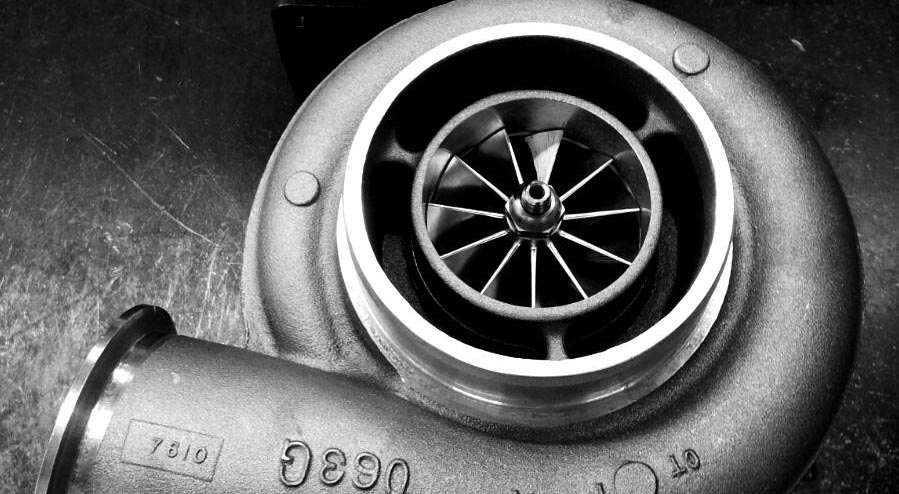
Turbo Upgrade FAQ – a guide to replacing your turbocharger
If you’re looking to maximise the power and performance of your vehicle, then changing your stock turbocharger for a bigger or better model can be an effective part of the process. In this guide, we take a look at some of the reasons for upgrading, what you can expect to achieve, and the considerations you…

AET Sponsors a fundraising walk in Cumbria
On the rainiest weekend in August, AET were one of the proud sponsors of a ‘3 Peaks 3 Lakes’ walk to help raise money to fund complimentary therapies for Kate Fisher, diagnosed earlier this year with multiple brain tumours (www.youcaring.com/katefisher). A couple of our employees, Emma Sykes and Ellie Duncan, took part in the event…

Getting more from your fleet – the benefits of ECU remapping for commercial vehicles
If you think having your vehicle ‘chipped’ is strictly for the performance enthusiast, then think again – ECU remapping is suitable for everyone, and can provide huge benefits to businesses running fleets of vehicles. In this post, we explore ECU remapping and the benefits of re-flashing for economy, and outline the realistic savings businesses with…
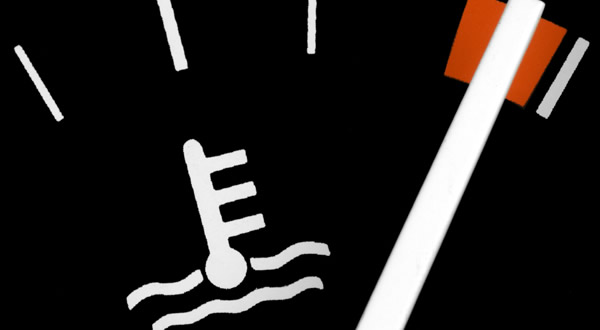
Hot stuff – excessive temperatures and turbocharger damage
Whilst we’ve already explored some of the most common causes of turbocharger damage on the blog before, like oil problems, foreign objects and over-speeding, these aren’t the only things that can cause expensive problems! In this post, we look at how overheating and excessive exhaust gas temperatures can damage turbochargers, and the kind of damage…
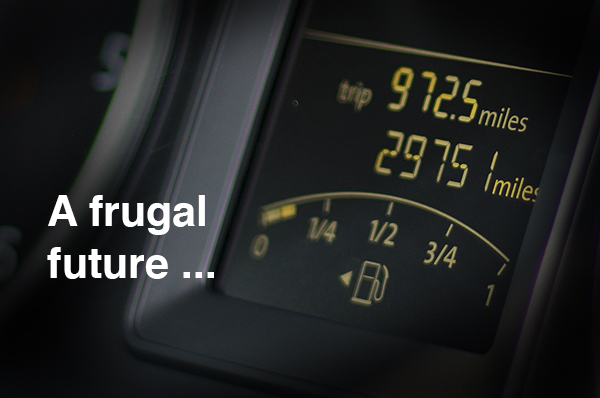
A frugal future – turbocharging and fuel economy
At one time, turbochargers on passenger vehicles were the reserve of the performance enthusiast, designed to help eek out extra power to improve acceleration and top speed – but today, things have changed completely. With rising fuel prices and increasing concern about the environment, manufacturers have turned to the turbo to help solve the problem,…

Turbo technology – the differences between petrol and diesel turbos
Customers often ask us questions about the differences between turbochargers on diesel and petrol engines, in terms of how they work, and what they are used for. In this post, we explore the topic, looking at the principles behind turbocharging, the basic differences between diesel and petrol engines, and how this affects the design of…
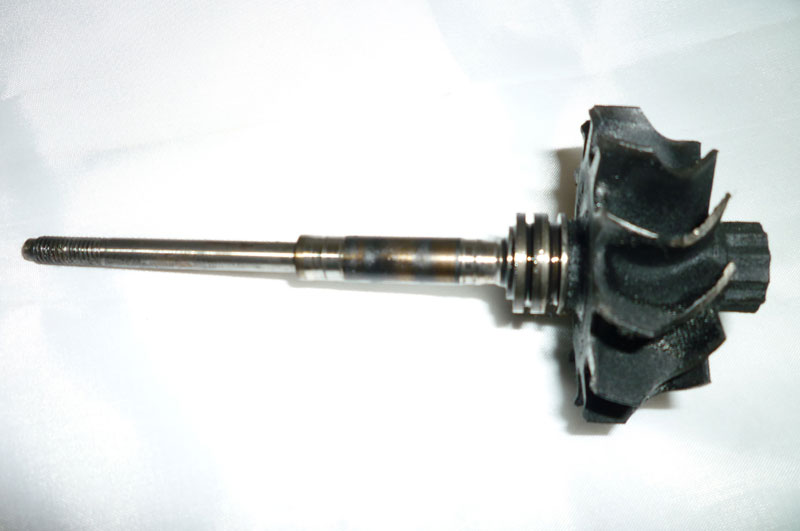
Turbine Shaft & Wheel – Oil Supply Pressure Problem
Here, you can see an example of heavy wear and polishing damage caused to a turbine shaft and wheel by a lack of oil, either due to a poor supply, or low oil pressure.
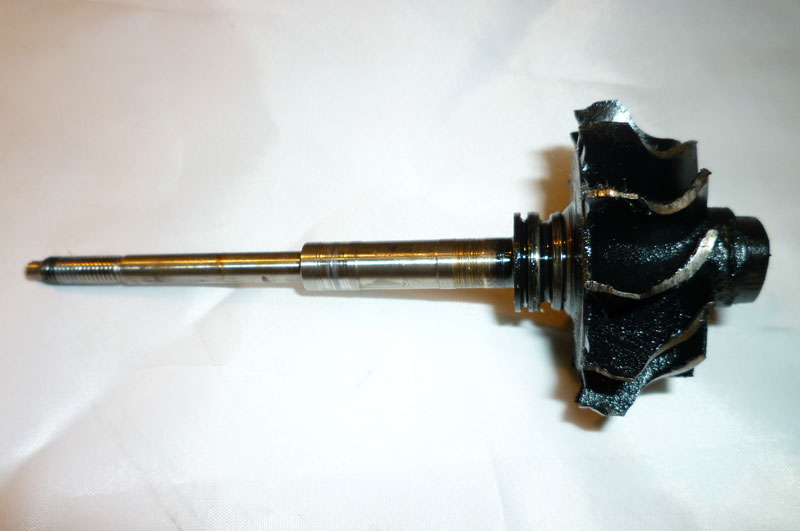
Turbine Shaft & Wheel – Severe Oil Contamination
In this example, you can see a turbine shaft and wheel that’s been damaged due to severe oil contamination – notice the built up oil coating both the wheel and the shaft, and the damaged blades on the wheel. On the shaft itself, you can also see where foreign objects in the contaminated oil have…
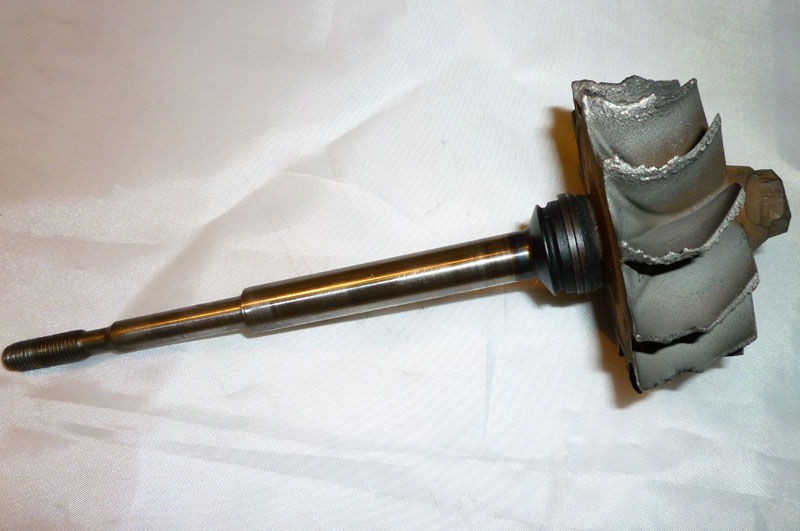
Turbine Shaft & Wheel – Engine Failure
This image shows a turbine shaft and wheel with fairly serious impact damage. If you look at the wheel itself, you can see that the blades are uneven and chipped, and that the surface of the wheel has become severely pitted.
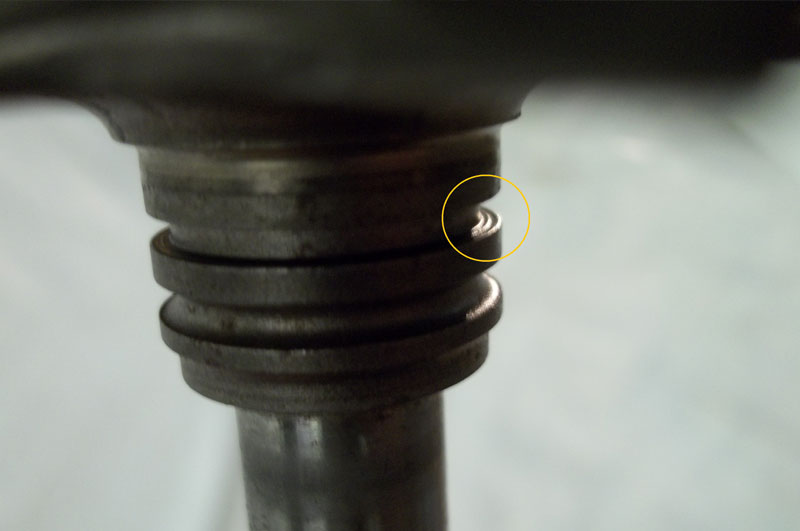
Turbine Shaft & Wheel – Worn Piston Ring Seal Groove (b)
Here, you can see a different example of wearing damage to a piston ring seal groove – in this case, the face on the inside of the groove has been worn away, so that it now has a lipped edge.
